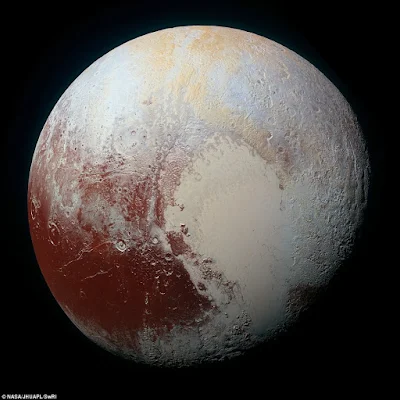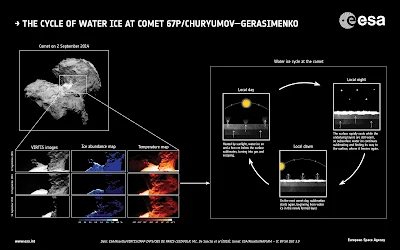Νέες
εντυπωσιακές εικόνες από τα υπολείμματα ενός σουπερνόβα. NASA's
Hubble Space Telescope has unveiled in stunning detail a small section of the
expanding remains of a massive star that exploded about 8,000 years ago. Called
the Veil Nebula, the debris is one of the best-known supernova remnants,
deriving its name from its delicate, draped filamentary structures. The entire
nebula is 110 light-years across, covering six full moons on the sky as seen
from Earth, and resides about 2,100 light-years away in the constellation
Cygnus, the Swan. This view is a mosaic of six Hubble pictures of a small area
roughly two light-years across, covering only a tiny fraction of the nebula’s
vast structure. This close-up look unveils wisps of gas, which are all that
remain of what was once a star 20 times more massive than our sun. The
fast-moving blast wave from the ancient explosion is plowing into a wall of
cool, denser interstellar gas, emitting light. The nebula lies along the edge
of a large bubble of low-density gas that was blown into space by the dying star
prior to its self-detonation. Image Credit: NASA/ESA/Hubble Heritage Team
Η
NASA έδωσε στη
δημοσιότητα νέες εντυπωσιακές εικόνες αλλά και ένα βίντεο από το νεφέλωμα του
Πέπλου που βρίσκεται σε απόσταση περίπου 1.500 ετών φωτός από τη Γη στον
αστερισμό του Κύκνου. Το εντυπωσιακό νεφέλωμα που έχει έκταση περίπου 110 έτη
φωτός είναι το κατάλοιπο ενός υπερκαινοφανούς αστέρα. Δείτε μια εκπληκτική
τρισδιάστατη απεικόνιση του νεφελώματος του Πέπλου:
This 3-D
visualization flies across a small portion of the Veil Nebula as photographed
by the Hubble Space Telescope. This region is a small part of a huge expanding
remnant from a star that exploded many thousands of years ago. Hubble resolves
tangled rope-like filaments of glowing gases. They have been shocked and heated
by colliding with cooler, denser interstellar gas. The 3-D model has been
created for illustrative purposes and shows that the giant bubble of gas has a
thin, rippled surface. It also highlights that the emission from different
chemical elements arises from different layers of gas within the nebula. In the
imagery, emission from Sulfur, Hydrogen, and Oxygen are shown in red, green,
and blue, respectively. Credit: NASA, ESA, and F. Summers, G. Bacon, Z. Levay,
and L. Frattare (Viz 3D Team, STScI)
Σύμφωνα
με τους επιστήμονες το άστρο εξερράγη κάποια στιγμή πριν από 5-8 χιλιάδες έτη
δημιουργώντας κύματα κρούσης τα οποία συνεχίζουν να αλληλεπιδρούν με τα
μεσοαστρικά αέρια και σκόνη σχηματίζοντας αυτό το υπέροχο νεφέλωμα το οποίο
θύμισε σε κάποιους πέπλο για αυτό και έλαβε αυτή την ονομασία. Τις νέες εικόνες
κατέγραψε το διαστημικό τηλεσκόπιο Hubble.


















